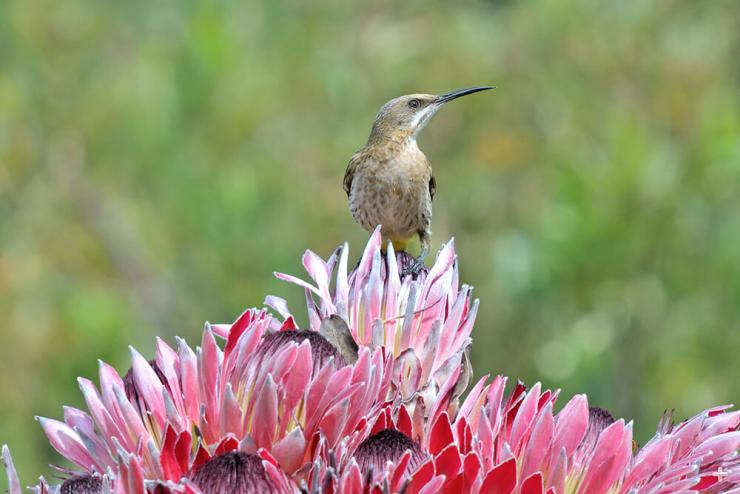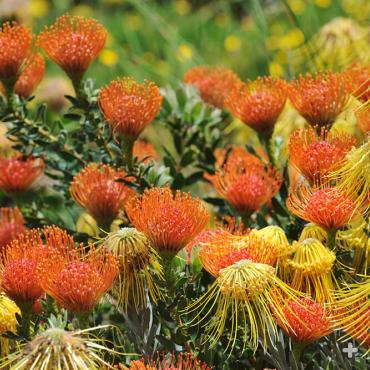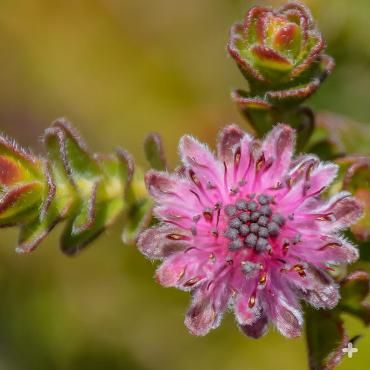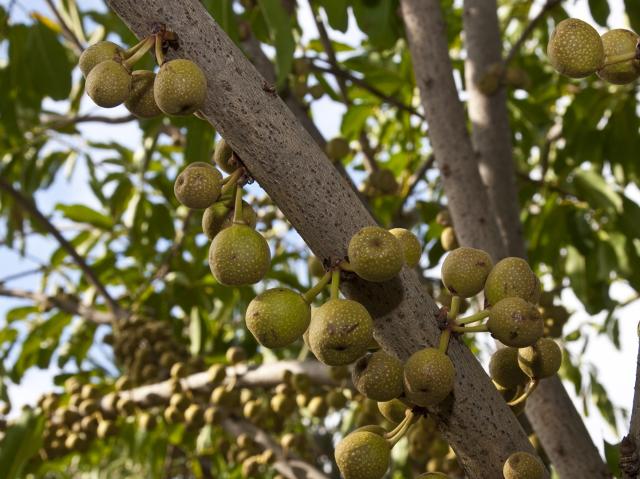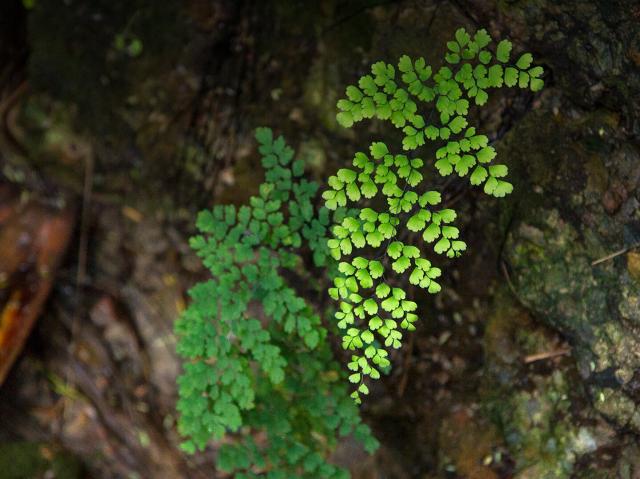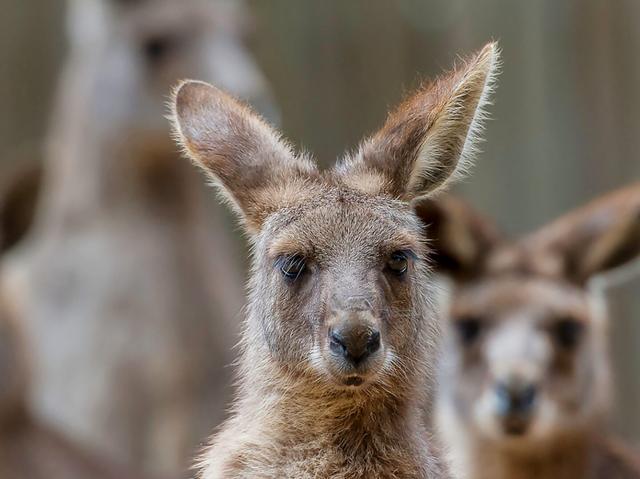
African Protea

- Division: Magnoliophyta
- Class: Equisetopsida
- Subclass: Magnoliidae
- Superorder: Proteanae
- Order: Proteales
- Family: Proteaceae
- Subfamily: Proteoideae
- Genus: 14 genera, including Protea and Leucospermum
- Species: about 360 species

Overview
Proteas were named after the Greek god Proteus, son of Poseidon, who had the ability to transform himself into many different shapes—and proteas do come in an astounding variety of shapes, sizes, hues, and textures. These plants are known for their unusual and beautiful flowers, which seem rather mythological themselves, like blooms from an alien landscape—some can reach 12 inches (30.5 centimeters) across. Proteas are considered to be among the oldest of flowering plants, and from the king protea Protea cynaroides to the tall silver tree Leucadendron argenteum to the nodding pincushion Leucospermum cordifolium, they have the allure of another time.
The species in the Proteoideae group are native to South Africa. More than 90 percent of them are only found in what’s known as the Cape Floristic Region, in a narrow region of the south and southwestern coastal mountain ranges that is considered one of the world’s biodiversity hotspots. The area is also referred to as Cape fynbos, Afrikaans for “fine bush,” and proteas there are often called sugarbushes.
Characteristics
African proteas can range in stature from tiny shrubs to tall trees of 25 feet (7.6 meters) or more. The leaves are arranged in a spiral around the stem, usually tough and leathery, and may be rounded, oval, paddle-shaped, or needle-like. They can be light to dark green, blue-green, or gray-green in color. Interestingly, they can absorb water, an adaptation to the plant’s often-dry environment to take advantage of accumulating moisture from coastal fog.
The protea flower is a cone-like head or cluster of individual, long, tubular flowers. In Protea species, they are often surrounded at the base by stiff, colorful, petal-like leaves or bracts, which often form a cup shape, with mass of one- to two-inch, white stamens in the center. In Leucospermum species, the flowers are produced in a dense group with long, prominent styles that stick up, giving the flower the look of a pincushion or firework. Protea flowers are showy, long lasting, and are typically shades of pink, red, white, cream, and yellow.
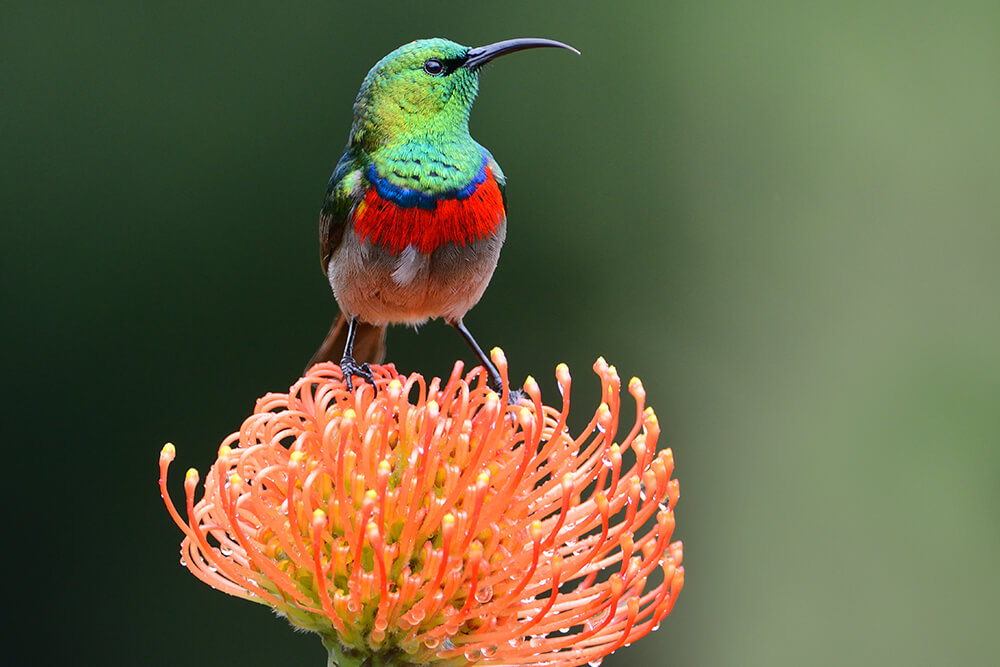
Proteas use a variety of pollination strategies. Many rely on nectar-feeding birds, especially African sunbirds and sugarbirds. Others are pollinated by flower-visiting rodents or insects. There is even a specific protea beetle Trichostetha fascicularis, and as many as 2,000 of these insects have been found in a single flower head.
Fire is an important element in shaping the landscape, and proteas have evolved to survive the frequent brush fires. Some avoid the flames by growing in rocky crags or through cracks or depressions in the ground, while others have tough roots that can quickly sprout new stems after a fire has gone through. Some varieties grow a thick bark that can insulate tissues. Some proteas even depend on fire: their tough, woody seedpods need to be exposed to burning and heat before they will open to release the seeds.
Cultivation
Proteas need an open, sunny, well-ventilated position and acidic soil that is gravelly, sandy, or basaltic loam. Propagation is from seed, cuttings, or grafting; the hybrid cultivars are usually propagated from cuttings. For best results, plant proteas in fall or spring, and allow plenty of space between plants for air to circulate.
Conservation
Although proteas are well adapted to their natural habitat, a number of varieties are considered at risk of extinction. Of the 360 African species, about 120 of them are listed as endangered, due to loss of habitat and over-collection. Disease can also be responsible for significant die-offs, especially when people inadvertently track non-native bacteria or fungi into the sensitive habitat. While the future of cultivated proteas seems secure, it is evident that proteas in their natural habitat are under pressure and conservation work is required to protect them.
Our Collection
Because proteas grow well in Southern California’s climate, both the Zoo and the Safari Park grow many varieties of proteas in our gardens. Here are some of these extraordinary plants to look for.
Family Roots
The Proteaceae family is among the oldest families of flowering plants on Earth, dating back 300 million years.
Royal Status
The king protea Protea cynaroides is the national flower of South Africa.
Proteas Represent
In African tradition, the protea flower represents change and hope. In the European language of flowers, proteas symbolize diversity and courage.


